- Home
- Thomas Keneally
A Commonwealth of Thieves Page 38
A Commonwealth of Thieves Read online
Page 38
He was retired in the middle of the wars against Napoleon. Able to settle down again in Bath at 19 Bennett Street, in February 1808 he suffered a stroke, recovered, suffered another, and was now, at last, untroubled by ambition. Old New South Wales hands such as Philip Gidley King, Henry Waterhouse, and John Hunter, back from his governorship of New South Wales, came to visit him. He lived another six years, partially paralysed, and was felled by a final stroke and buried in the churchyard of St. Nicholas at Bathampton on 7 September 1814.
He makes a dissatisfied ghost. But as already noted, it is in New South Wales and the ultimate Australia that his spirit is most visible, pragmatic yet thorough, caught between sparks of both authority and compassion, a bleak white icon who conducted the Sydney experiment and made it a success for the likes of Henry Kable, and a catastrophe for Bennelong and his kind.
notes
My thanks for the research assistance of my daughter Jane, and to the staff of the State Library of New South Wales, Sydney, and the National Library of Australia, Canberra.
ABBREVIATIONS
ADB Australian Dictionary of Biography
HO Home Office
ML Mitchell Library
OBSP Old Bailey Session Papers
HRA Historical Records of Australia
HRNSW Historical Records of New South Wales
NLA National Library of Australia
For fuller details on all books referred to in the notes, see Bibliography.
Chapter One
On the journey of the First Fleet, a chief source is Hunter's journal: Captain John Hunter, Commander HMS Sirius, with further accounts by Governor Arthur Phillip, Lieutenant P. G. King, and Lieutenant H. L. Ball, An Historical Journal, 1787–1792 (p. 24 quoted here). See also Arthur Phillip, The Voyage of Governor Phillip to Botany Bay.
As for complaints: Ralph Clark, The Journal and Letters of Lt. Ralph Clark, 1787–1792.
For “musty pancakes”: Clark, p. 83.
Tasman and Cook: J. C. Beaglehole, The Life of Captain James Cook; Nicholas Thomas, Discoveries: The Voyages of Captain Cook, London, 2003; John Robson, Captain Cook's World: Maps of the Life and Voyages of James Cook RN.
Expelling convicts from Europe: A. G. L. Shaw, Convicts and the Colonies: A Study of Penal Transportation from Great Britain and Ireland to Australia and Other Parts of the British Empire, pp. 20–57; G. B. Barton, History of New South Wales from the Records, vol. I, pp. 1–20, 439–42.
Bacon, Of Plantations: “The people wherewith you plant ought to be gardeners, ploughmen, labourers, smiths, carpenters, joiners, fisher men, fowlers, with some few apothecaries, surgeons, cooks and bakers.”
Transport to North American colonies: Shaw, p. 33.
On top of the numbers of convicts sent to the North American colonies, it was estimated by Thomas Povey, the Secretary to the Council of State and a leading London merchant with Barbadian interests, that up to 12,000 political prisoners, in addition to felons and vagabonds, had been received into Barbados by 1655. They helped to bridge the escalating demand for labour until the transition to black slavery in the 1660s: http//:iccs.arts.utas.edu.au, Andrea Button, University of the West of England.
Death rate in Virginia: Niall Ferguson, Empire, p. 72.
American complaints: “The body of the English are struck with terror at the thought of coming over to us, not because they have a vast ocean to cross … but from the shocking ideas the mind must necessarily form of the company of in-human savages and the most terrible herd of exiled malefactors.” The Independent Reflector, quoted in Barton, p. 558; Shaw, p. 17.
Transportable offences: Barton, vol. I, p. 218; J. M. Beattie, Crime and the Courts in England, 1660–1800; Douglas Hay, Peter Linebaugh, E. P. Thompson, John G. Rule, Cal Winslow, Albion's Fatal Tree, Crime and Society in Eighteenth Century England, London, 1975, pp. 17–63.
Opposition to death sentences for theft: G. D. Woods, A History of Criminal Law in New South Wales: The Colonial Period, 1788–1900, p. 19.
Leniency of juries: Shaw, pp. 25–26.
Benefit of clergy: Beattie, pp. 88–89; Hay, p. 22.
Convict attitudes to hanging: Robert Holden, Orphans of History: The Forgotten Children of the First Fleet, p. 57; Hay, p. 66.
Executions in number and as public spectacle: Beattie, pp. 451–55; Hay et. al., pp. 66, 69; Roy Porter, English Society in the Eighteenth Century, p. 157.
Boswell attending executions: Frank Brady, James Boswell; The Later Years, 1769–1795, p. 282.
Pardons: Shaw, p. 28. In the 1770s, two-thirds of the Norfolk and Midland circuits' death sentences were remitted to sentences of transportation; Beattie, pp.430–31, 472–73, 475–79, 530–33; Hay, pp. 40–49.
Between 1770 and 1772 a number of convicts had been pardoned on condition that they join the navy. But the Lords of the Admiralty soon “expressed their wishes that no more convicts may ordinarily be ordered on board HM's ships, as such persons may not only bring distempers and immoralities amongst their companions, but may discourage men of irreproachable character from entering HM's service.” Dr. Samuel Johnson put it with more bite. “No man will be a sailor who has contrivance enough to get himself into a gaol,” declared Johnson famously, “for being in a ship is being in gaol, with the chance of being drowned.” Shaw, p. 28.
On prisons: Porter, p. 91; Holden, pp. 69–70; John Bonwick, Australia's First Preacher, the Reverend Richard Johnson, pp. 26–27; Beattie, pp. 289–313, 560–608; Hay.
John Howard: Beattie, pp. 288–308, 572–629; Shaw.
On Newgate: Daniel Defoe, Moll Flanders, p. 28; Peter Ackroyd, London: The Biography, p. 251; Holden, pp. 65–66; Tom Griffith (gen. ed.), The Newgate Calendar, 1997, pp. 3–5.
Barrington: Australian Dictionary of Biography (ADB), Vol. I, alphabetical listening; and at least as far as Barrington's legend goes, Suzanne Rickard (ed. ), George Barrington's Voyage to Botany Bay, Retelling a Convict's Travel Narrative of the 1790s.
Campbell: Shaw, pp. 34–36; The Blackheath Connection, a superbly researched Web site by historian Dan Byrne, is devoted to the study of activities and motivations of the men, generally Scots, of the Blackheath area and friends of Duncan Campbell's, who supplied the ships for the early penal fleets. Assembled with the help of Blackheath librarian Leo Rhind.
Hulks: Beattie, p. 567; Shaw, p. 43; Frost, p. 41; Blackheath Connection.
Lemane settlement and opposition: Shaw, pp. 46, 48, 57.
Matra's Proposal: HO 7/1 microfilm, ML; Shaw, pp. 44, 45.
Banks's testimony: HO 7/1 microfilm, ML.
Lord Sydney details: Atkinson, pp. 99–100; alphabetical listing, The Australian Encyclopaedia; C. M. H. Clark, A History of Australia, vol. 1, From the Earliest Times to the Age of Macquarie, pp. 68–69.
Banks before the Commons Committee: C. M. Clark (ed.), Sources of Australian History, pp. 61–69, from Journals of the House of Commons, vol. xxxvii, pp. 311–14.
Reaction to Committee, and Home Office reaction: Shaw, pp. 45–46.
Final selection of New South Wales: Lord Sydney to the Lord Commissioners of the Treasury, August 18, 1786, Sources, pp. 69–72.
Jeremy Bentham and the panopticon: J. B. Hirst, Convict Society and Its Enemies: A History of Early New South Wales, pp. 10–15.
Evan Nepean: ADB, vol. II, alphabetical listing.
Chapter Two
Phillip's early life: Alan Frost, Arthur Phillip, His Voyaging; M. Barnard Elder-shaw, Phillip of Australia; George Mackaness, Admiral Arthur Phillip, Founder of New South Wales, 1738–1814.
Geography of London criminals: L. L. Robson, The Convict Settlers of Australia: An Enquiry into the Origin and Character of the Convicts Transported to New South Wales and Van Diemen's Land 1787–1852, pp. 11–12; Thomas Beames, The Rookeries of London, pp. 25–27; Beattie, pp. 253–262.
Tawny Prince and flash or cant: Captain Watkin Tench of the Marines, Sydney's First Four Years, reprint of A Narrative of the
Expedition to Botany Bay and a Complete Account of the Settlement at Port Jackson, p. 297; Captain Grose, 1811 Dictionary of the Vulgar Tongue.
Enclosure Acts: Porter, pp. 225–30; Hay, pp. 275–76, 313–14; digital search of Enclosure Act sites recommended.
Oliver Goldsmith, The Deserted Village. This version taken from Representative Poetry Online, a Web site of the Library of the University of Toronto.
Sarah Bellamy and her trial: Madge Gibson, Belbroughton to Botany Bay, booklet; PRO, Assizes 2/25; Mollie Gillen, The Founders of Australia: A Biographical Dictionary of the First Fleet, alphabetical listing; Arthur Bowes Smyth, The Journal of Arthur Bowes Smyth: Surgeon, Lady Penrhyn, 1787–1789, p. 5.
John Hudson's trials: OBSP, 1783–84, on microfilm, ML, 10 December 1783, p. 49.
William Blake: The Poetical Works of William Blake, pp. 74, 104. The first continues:
And because I am happy and dance and sing,
They think they have done me no injury,
And are gone to praise God and his priest and King
Who make up a Heaven of our misery.
Hudson, posttrial: Robert Holden, Orphans of History: The Forgotten Children of the First Fleet, p. 72.
Mary Marshall, trial: OBSP, 1783–84, p. 935.
Hippesley: OBSP, 1784–85, p. 438.
Mullens: OBSP, 1785–86, p. 525.
Peat: OBSP, 1784–85, p. 532.
Martin: OBSP, 1781–82, p. 454.
Chapter Three
Howe's opinion: HRNSW, vol. I, pt. II, p. 22.
Phillip's maritime and naval career: ADB, Vol. II, alphabetical listing; Frost, Phillip; George Mackaness, Admiral Arthur Phillip; M. Barnard Eldershaw, Phillip of Australia.
Phillip's marriage and resultant matters: Observer of London, 15 December 1793, Anecdotes of Governor Phillip.
Phillip as spy: Frost, p. 55 onwards.
Phillip's Portuguese naval career: Kenneth Gordon McIntyre, The Rebello Transcripts, Governor Phillip's Portuguese Prelude, especially pp. 79–161.
Phillip's return to Royal Navy: Frost; McIntyre, pp. 162–76.
Command of Europe: McIntyre, as above; Edward Spain, The Journal of Edward Spain, Merchant Seaman and Sometimes Warrant Officer in the Royal Navy, especially pp. 40–49; McIntyre, pp. 162–79.
Further espionage: Frost, pp. 130–31.
Heads of a Plan: HRNSW, vol. I, pt. II, pp. 18–19.
Chapter Four
Phillip's expeditionary philosophy: HRNSW, vol. I, pt. II, pp. 50–54.
William Richards and other contractors: The Blackheath Connection, electronic book, especially chap. 34; Charles Bateson, The Convict Ships, 1787–1868, pp. 11, 20.
First Fleet vessels: Bateson, pp. 95–102; Blackheath Connection, chap. 34.
Security arrangements on board: Philip Gidley King, The Journal of Philip Gidley King: Lieutenant, RN, 1787–1790, pp. 6, 7.
Phillip to Nepean: HRNSW, vol. I, pt. II, p. 59.
Lists of convicts and first loading: Bateson, pp. 95–102.
Relationship between women and sailors: Arthur Bowes Smyth, The Journal of Arthur Bowes Smyth: Surgeon, Lady Penrhyn, 1787–1789, p. 25; Gibson; Gillen, alphabetical listings.
Phillip visits ships, and clothing of women: HRNSW, vol. I, pt. II, pp. 58, 59.
Move to Motherbank: HRNSW, vol. I, pt. II, pp. 33–36, 45, 46.
Henry Kable: Cobley, Crimes, p. 46 (under Cable); ADB, alphabetical listing; Gillen, alphabetical listings; Daily Universal Register, 15 December 1786, HRA, vol. I, pp. 3–7.
Marines boarding: John W. Given, First Fleet Marines of Port Jackson and Norfolk Island and in Van Diemen's Land, pamphlet; Ralph Clark, The Journal and Letters of Lt. Ralph Clark, 1787–1792, p. 13; Hampshire Courier, 12 March 1787; James H. Thomas, Portsmouth and the First Fleet, 1786–1787, p. 22.
Further movements of convicts: Thomas, pp. 23–25; Watkin Tench, Sydney's First Four Years, reprint of A Narrative of the Expedition to Botany Bay and a Complete Account of the Settlement at Port Jackson, pp. 3, 4: Bowes Smyth, p. 13.
Whitewashing: John White Esq., Journal of a Voyage to New South Wales, p. 51 (modern edition).
Sirius trouble: Lt. Bradley's Journal, Heritage Online, Web site of State Library of New South Wales.
Bowes Smyth boards: Bowes Smyth, pp. 11–13.
Morale of marines: Clark, p. 19.
Infractions amongst marines: John Easty, Private Marine, Memorandum of the Transactions of a Voyage from England to Botany Bay, 1787–1793: A First Fleet Journal, p. 5.
Portsmouth: Thomas, Portsmouth.
Opinions in press: Thomas; HRNSW, vol. II, pp. 738–39; John Bonwick, Australia's First Preacher, the Reverend Richard Johnson, p. 13.
News of La Pérouse: Frost; Colin Foster, France and Botany Bay: The Lure of a Penal Colony, pp. 7–8.
Phillip boards, clock, etc.: amongst others, Captain John Hunter, Commander HMS Sirius, with further accounts by Governor Arthur Phillip, Lieutenant P. G. King, and Lieutenant H. L. Ball, An Historical Journal, 1787–1792, p. 3.
Collins: ADB, vol. I, alphabetical listing; editor's introduction to Collins, An Account, pp. xiii–xvii.
Verse, broadside: Geoffrey Ingleton, True Patriots All, pp. 8, 9.
Chapter Five
The sources for the journey are the journals: Hunter, pp. 1–37; Collins, pp. iii–xc; White, pp. 52–101; King, pp. 5–31; Tench, pp. 11–32; Clark, pp. 11–80; Bowes Smyth, pp. 16–56; Easty, pp. 5–88; James Scott, Sergeant of Marines, Remarks on a Passage to Botany Bay, 1787–1792, pp. 1–33; also Bradley Journal, Heritage Online, State Library of New South Wales; also Bateson, pp. 95–119.
Hunter: Eldershaw, p. 41; ADB, vol. I, alphabetical listing.
Contraceptive practice: Porter, pp. 41–42; Siân Rees, The Floating Brothel: The Extraordinary Story of the Lady Julian and Its Cargo of Female Convicts Bound for Botany Bay, pp. 109, 110.
Dawes and Astronomer Royal: ADB, vol. I, alphabetical listing.
Beckwith (also Beckford) and Sandlyn: Bowes Smyth, p. 25; David Collins, An Account of the English Colony in New South Wales, vol. I, p. 244; Gillen, alphabetical listings.
Chapter Six
Approaches to landfall: King, p. 32.
Chronometer: Hunter, p. 3.
Reaching Botany Bay: King, p. 34.
Aboriginal occupation: John Mulvaney and Johan Kamminga, Prehistory of Australia, pp. 69–71; for Sydney region, pp. 284–89.
Tribes and clans: Inga Clendinnen, Dancing with Strangers, pp. 290, 291; Keith Smith, Bennelong: The Coming in of the Eora, Sydney Cove, 1788–1792; Keith Willey, When the Sky Fell Down, pp. 12–18.
Firestick farming: ibid., pp. 60–62.
Landings at Botany Bay: King, pp. 33–35.
Shift in meaning: Paul Carter, The Road to Botany Bay: An Exploration of Landscape and History, p. 37.
Aboriginal resistance: King in Hunter, p. 272.
Arrival of second division: Tench, pp. 34–37; Bowes Smyth, p. 57.
Watkin Tench: Tench, p. 32; ADB, vol. II, alphabetical listing; Tench, editor's introduction, xiv–xxv.
Arrival: Tench, p. 32.
Convict women and their prospects: Portia Robinson, Women of Botany Bay, pp. 56–58.
Resistance to taking of fish: King, p. 34.
Natives offer women: King, p. 35.
Tench's adventures ashore: Tench, pp. 36–37.
Aboriginal language: Mulvaney and Kamminga, pp. 69–77; Collins, journal, pp. 506–12.
Native lances: Bowes Smyth, pp. 57, 58.
Botany Bay: Cook's journal, original and edited, Carter, pp. 10–16; Beaglehole, pp. 230–33.
Moulton: Gillen, alphabetical listing; Don Chapman, 1788: The People of the First Fleet, alphabetical listing; Cobey, Crimes, p. 194, under alias “Morton.”
Decision to explore north, and subsequent discoveries: HRA, Series I, vol. I, p. 18; Collins, pp. 2, 3.
Jacob Nagle: The
Nagle Journal: A Diary of the Life of Jacob Nagle, Sailor, from the Year 1775 to 1841, pp. 92–95.
Movements in Port Jackson, again: Phillip to Sydney, HRA, vol. I, p. 18; Nagle, pp. 92–95.
Albion and Sydney Cove: Collins, p. 5.
Aboriginal names: Collins, p. 504 and following; reliable Web sites devoted to pre-European Sydney area can be accessed by typing “Eora tribes” or “Eora place-names.”
Chapter Seven
Arrival of two ships: Tench, p. 127.
Move of the fleet to Sydney, and arrival of La Pérouse: Hunter, pp. 29, 30; Collins, pp. 3–5.
Attitude to French: Porter, p. 21.
Clark and Tench react to Port Jackson: Clark, pp. 92, 93; Tench, p. 38.
Geography of Cove and settlement: Collins, pp. 4, 5.
Dawes and White: Collins, p. 12; White, pp. 113, 114.
Canvas Government House: Hunter, p. 53; HRA, vol. II, pp. 666–67.
Harry Brewer: ADB, vol. I, alphabetical listing; HRA, vol. I, p. 35.
Clark and his tent: Clark, p. 93.
Native plants: White, pp. 151–58.
Building of huts, and unsuitable wood: White, p. 119; Tench, pp. 38–39, 60; Collins, pp. 5, 6.
Livestock and Corbett: Collins, p. 5.
Phillip et al. and Eora: Hunter, pp. 38–46.
First farming, convicts and supervisory duty: Collins, pp. 5–7, 17; Phillip to Banks: HRA, as above.
James Ruse: ADB, vol. II, alphabetical listing; Collins, pp. 75–76; Tench, pp.197–98; Phillip in Hunter, pp. 301, 351.
Ross: ADB, vol. II, alphabetical listing; C. M. H. Clark, vol. I, p. 74; Alan Atkinson, The Europeans in Australia; A History, vol. I, pp. 57, 58, 72–75.

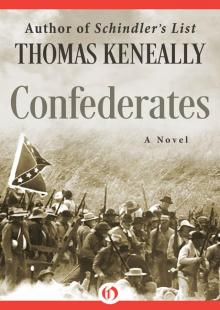 Confederates
Confederates Flying Hero Class
Flying Hero Class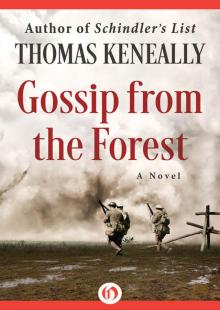 Gossip From the Forest
Gossip From the Forest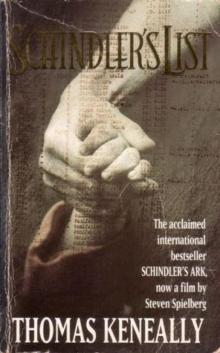 Schindler's List
Schindler's List Bring Larks and Heroes
Bring Larks and Heroes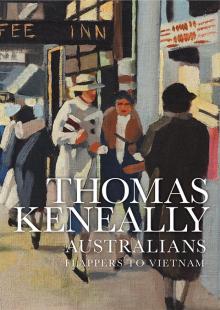 Australians: Flappers to Vietnam
Australians: Flappers to Vietnam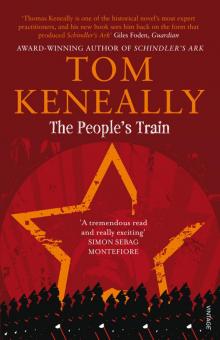 The People's Train
The People's Train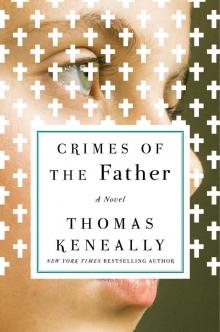 Crimes of the Father
Crimes of the Father A Family Madness
A Family Madness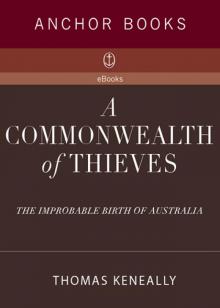 A Commonwealth of Thieves
A Commonwealth of Thieves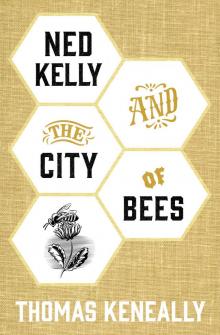 Ned Kelly and the City of Bees
Ned Kelly and the City of Bees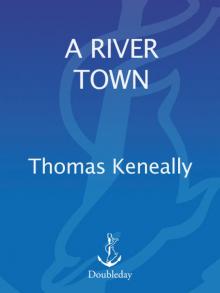 A River Town
A River Town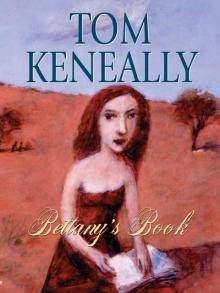 Bettany's Book
Bettany's Book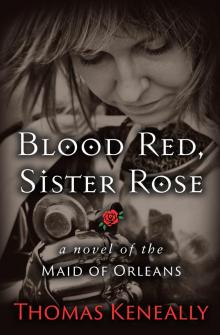 Blood Red, Sister Rose: A Novel of the Maid of Orleans
Blood Red, Sister Rose: A Novel of the Maid of Orleans Victim of the Aurora
Victim of the Aurora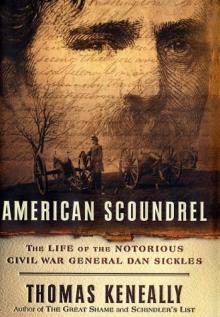 American Scoundrel American Scoundrel American Scoundrel
American Scoundrel American Scoundrel American Scoundrel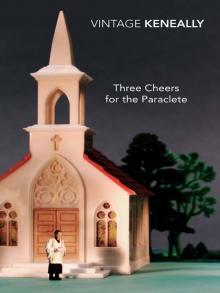 Three Cheers for the Paraclete
Three Cheers for the Paraclete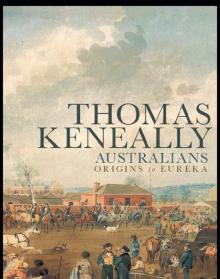 Australians: Origins to Eureka: 1
Australians: Origins to Eureka: 1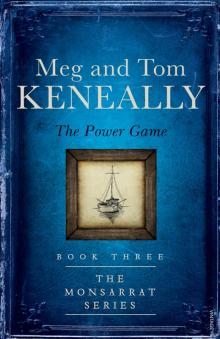 The Power Game
The Power Game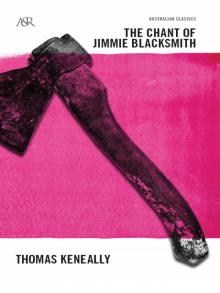 The Chant Of Jimmie Blacksmith
The Chant Of Jimmie Blacksmith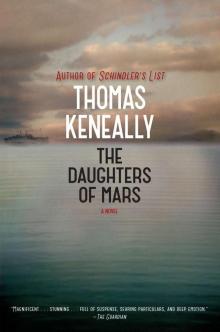 The Daughters of Mars
The Daughters of Mars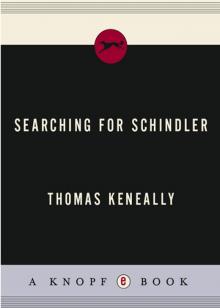 Searching for Schindler
Searching for Schindler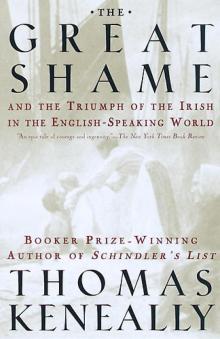 The Great Shame: And the Triumph of the Irish in the English-Speaking World
The Great Shame: And the Triumph of the Irish in the English-Speaking World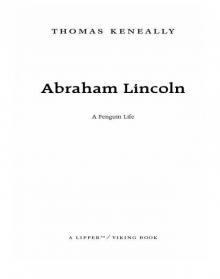 Abraham Lincoln
Abraham Lincoln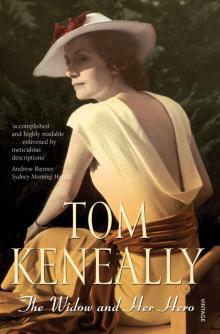 The Widow and Her Hero
The Widow and Her Hero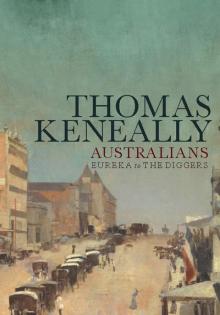 Eureka to the Diggers
Eureka to the Diggers Shame and the Captives
Shame and the Captives The Survivor
The Survivor Jacko: The Great Intruder
Jacko: The Great Intruder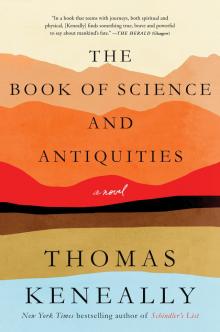 The Book of Science and Antiquities
The Book of Science and Antiquities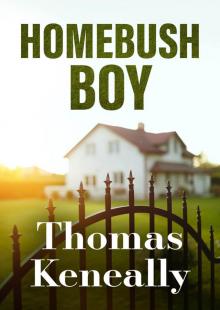 Homebush Boy
Homebush Boy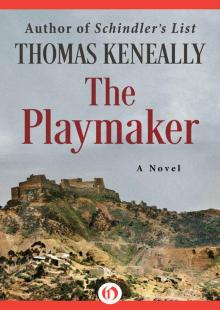 The Playmaker
The Playmaker To Asmara: A Novel of Africa
To Asmara: A Novel of Africa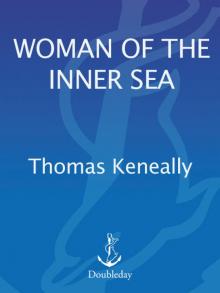 A Woman of the Inner Sea
A Woman of the Inner Sea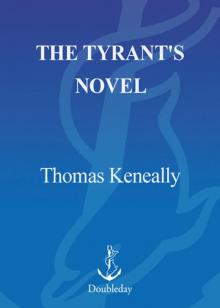 The Tyrant's Novel
The Tyrant's Novel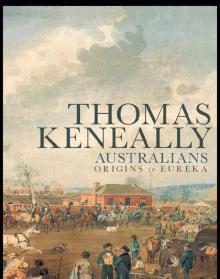 Australians
Australians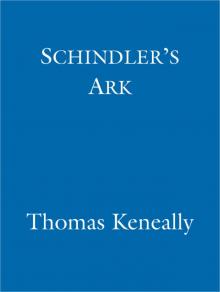 Schindler's Ark
Schindler's Ark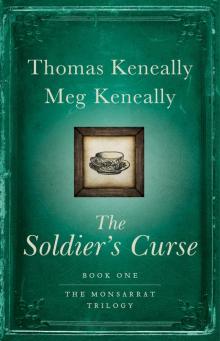 The Soldier's Curse
The Soldier's Curse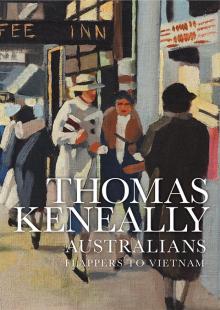 Australians, Volume 3
Australians, Volume 3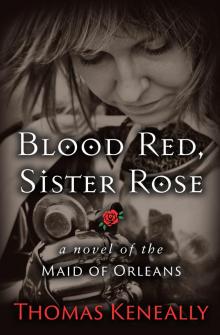 Blood Red, Sister Rose
Blood Red, Sister Rose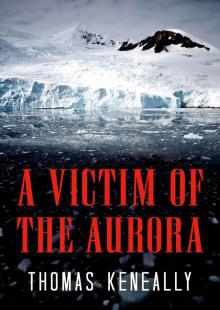 A Victim of the Aurora
A Victim of the Aurora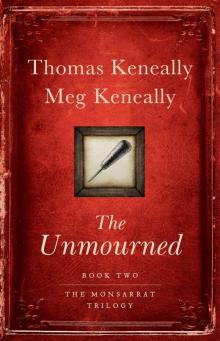 The Unmourned
The Unmourned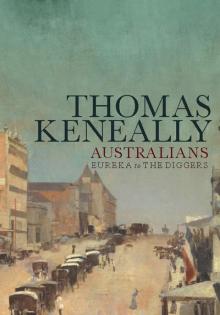 Australians, Volume 2
Australians, Volume 2 To Asmara
To Asmara